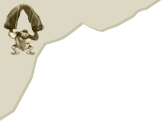

The use of geophysical surveys is a new tool that can be very useful in archaeological research. When new sites are found, and before large-scale excavations are conducted, geophysical surveys can help verify the existence of archeological layers and evaluate their horizontal and vertical extent. In sites that have already been studied, such surveys can provide vital estimates of the depth and spatial dimensions of archeological deposits still present at the site and help us determine the value of and strategy for future research.
At Misliya Cave a geophysical survey was conducted prior to excavation. Its aim was to establish the depth of the brecciated archeological layers as a means of examining the prospects of a comprehensive excavation at the site. We applied the Continuous Vertical Electrical Sounding (CVES, also known as “Electrical imaging” and "Pseudo section inversion”) which is used to solve geohydrological, environmental and engineering problems (Loke and Barker 1996). The method can be employed in both homogeneous and heterogeneous media and was found to be useful in detecting heterogeneities such as cavities, ore bodies etc. Moreover, it facilitates differentiating between various rock and sediment layers such as clay, marl, sand, sandstone, limestone and water-saturated soils and rocks.
 The geophysical survey at Misliya Cave consisted of a single CVES line, 28 m long, along the Upper Terrace of the site (Weinstein-Evron et al. 2003). The profile was set with electrodes at intervals of 2m.
The geophysical survey at Misliya Cave consisted of a single CVES line, 28 m long, along the Upper Terrace of the site (Weinstein-Evron et al. 2003). The profile was set with electrodes at intervals of 2m.

The section shows resistivity distribution through a two dimensional cross-section along and under the CVES profile. A low resistivity anomaly (100–300 ohm-m) in the northern part of the section is overlain by a thin (1–1.5 m thick) layer, while the less conductive layer (resistivity of 400–1000 ohm-m) underlies the low resistivity structures and is exposed at the surface at the southern part of the cross-section. Based on the geoelectric calculations, together with field observations, it was concluded that the low resistivity values at the northern part of the Misliya Cave cross-section represent lithified archeological layers at the north–central part of the Upper Terrace of the site. Moreover, it indicates that the archeological deposits here are preserved to a depth of ca. 4m.
- Loke, M. H. and Barker, R. D. 1996. Rapid least-squares inversion of apparent resistivity pseudo-sections by a quasi-Newton method. Geophysical Prospecting 44: 131-152.
- Weinstein-Evron, M., Beck, A. And Ezersky, M. 2003. Geophysical Investigations in The Service Of Mount Carmel Prehistoric Research. Journal of Archaeological Science 30: 1331-1341.


